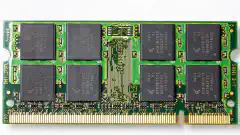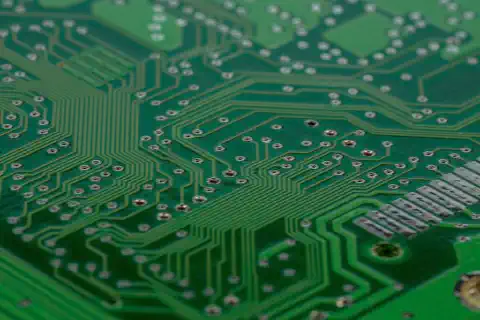Securing Systems: The Pivotal Role of ECC Memory Against Data Corruption

Table of Contents
The Role of ECC Memory in Mitigating Data Corruption
ECC memory plays a crucial role in mitigating data corruption and ensuring the reliability of computer systems. By detecting and correcting errors in data, ECC memory helps prevent data corruption from affecting the overall performance and stability of systems. This article explores the concept of ECC memory, its benefits, and its common applications. It also examines the impact of data corruption on systems and the financial implications it can have. Furthermore, the article delves into how ECC memory detects and corrects errors, presents case studies showcasing its effectiveness, and compares it with other error correction techniques. It also discusses the implementation of ECC memory in different environments, including considerations for server environments, challenges and solutions for desktop systems, and its use in embedded systems and IoT devices. Lastly, the article explores future trends and developments in ECC memory, including advancements in technology, potential applications in emerging technologies, and ongoing research and innovations.
Key Takeaways
- ECC memory detects and corrects errors in data, ensuring the reliability of computer systems.
- Data corruption can have significant effects on systems, including performance degradation and stability issues.
- Using ECC memory can help mitigate the financial implications of data corruption by preventing costly system failures.
- ECC memory outperforms other error correction techniques in terms of effectiveness and reliability.
- Implementing ECC memory requires considering the specific requirements and challenges of different environments.
What is ECC Memory?
How does ECC Memory work?
ECC Memory works by using a technique called error correction code to detect and correct errors in data. This technique involves adding extra bits to each memory word, which are used to store parity information. When data is written to memory, the parity bits are calculated and stored along with the data. During a read operation, the parity bits are checked against the stored data to detect any errors. If an error is detected, the ECC Memory can use the parity information to correct the error and ensure the integrity of the data.
ECC Memory uses a Hamming code, which is a type of error correction code that can detect and correct single-bit errors. The Hamming code works by adding parity bits in specific positions within the memory word, allowing it to detect and correct errors in those positions. This provides a high level of error detection and correction capability, making ECC Memory highly reliable.
ECC Memory is commonly used in mission-critical systems where data integrity is of utmost importance, such as servers, workstations, and high-performance computing environments. It provides an extra layer of protection against data corruption, ensuring the accuracy and reliability of stored information.
Benefits of using ECC Memory
ECC Memory offers several benefits that make it a valuable addition to any system:
- Error detection and correction: ECC Memory can detect and correct single-bit errors, ensuring data integrity and preventing system crashes.
- Improved system stability: By detecting and correcting errors, ECC Memory helps maintain system stability and reduces the risk of data corruption.
- Higher reliability: ECC Memory provides an extra layer of protection against data corruption, making it ideal for critical applications that require high reliability.
- Reduced downtime: With its error correction capabilities, ECC Memory reduces the frequency of system crashes and the need for manual intervention, resulting in less downtime.
- Longer lifespan: By preventing data corruption, ECC Memory helps extend the lifespan of storage devices and reduces the need for frequent replacements.
- Peace of mind: Knowing that ECC Memory is actively monitoring and correcting errors provides peace of mind for system administrators and users alike.
Common applications of ECC Memory
ECC Memory is widely used in various industries and applications where data integrity is critical. Some common applications of ECC Memory include:
Enterprise Servers: ECC Memory is essential in enterprise server environments where large amounts of data are processed and stored. It helps to prevent data corruption and maintain the reliability of critical systems.
Financial Institutions: ECC Memory is commonly used in financial institutions to ensure the accuracy and integrity of financial transactions. It helps to prevent errors that could lead to financial losses.
Medical Systems: ECC Memory is crucial in medical systems, such as hospital databases and medical imaging devices. It helps to prevent data corruption that could impact patient care and diagnosis.
Scientific Research: ECC Memory is used in scientific research applications, such as high-performance computing and data analysis. It ensures the accuracy of research data and prevents errors in complex calculations.
Cloud Computing: ECC Memory is employed in cloud computing environments to protect data integrity and ensure reliable performance for cloud-based services.
Data Centers: ECC Memory is widely used in data centers to safeguard the integrity of stored data and maintain the stability of critical infrastructure.
Industrial Control Systems: ECC Memory is utilized in industrial control systems to prevent data corruption that could lead to equipment malfunction or safety hazards.
Military and Defense: ECC Memory is employed in military and defense systems to ensure the reliability and accuracy of critical data and communications.
Aerospace and Aviation: ECC Memory is used in aerospace and aviation applications to prevent data corruption that could impact the safety and performance of aircraft systems.
Telecommunications: ECC Memory is commonly used in telecommunications infrastructure to maintain data integrity and prevent errors in communication networks.
Data Corruption and its Impact
Causes of data corruption
Data corruption can occur due to various reasons, including:
- Hardware failures: Faulty RAM modules, power supply issues, or overheating can lead to data corruption.
- Software bugs: Programming errors or software glitches can cause data corruption.
- Malware or viruses: Malicious software can intentionally corrupt data.
- Human errors: Accidental deletion or modification of files can result in data corruption.
It is important to identify and address the root causes of data corruption to prevent further damage to systems and data integrity.
Effects of data corruption on systems
Data corruption can have severe consequences on the stability and reliability of computer systems. Unreliable data can lead to system crashes and data loss, which can be detrimental to businesses and organizations. Here are some key effects of data corruption on systems:
- Decreased system performance: Data corruption can cause delays and slowdowns in system operations, affecting overall performance.
- Inaccurate results: Corrupted data can lead to incorrect calculations, analysis, and decision-making, compromising the integrity of the system.
- Security vulnerabilities: Data corruption can create security loopholes, making systems more susceptible to unauthorized access and cyberattacks.
- Downtime and disruption: When data corruption occurs, systems may need to be taken offline for repairs, resulting in downtime and disruption to operations.
To mitigate these effects and ensure data integrity, the use of ECC Memory is crucial. ECC Memory provides error detection and correction capabilities, reducing the risk of data corruption and enhancing system reliability.
Financial implications of data corruption
Financial implications of data corruption
Data corruption can have significant financial consequences for organizations. The loss or corruption of critical data can result in costly downtime and disruptions to business operations. This can lead to lost revenue and missed opportunities. Additionally, organizations may face legal and regulatory penalties if data corruption results in non-compliance with data protection laws.
To quantify the financial impact of data corruption, organizations can consider the following factors:
- Cost of data recovery: Recovering corrupted data can be an expensive and time-consuming process, requiring specialized expertise and tools.
- Loss of productivity: Data corruption can cause system failures and delays, resulting in decreased productivity and increased labor costs.
- Reputation damage: Data corruption incidents can erode customer trust and damage the reputation of the organization, leading to potential loss of business.
Organizations can mitigate these financial risks by implementing ECC Memory in their systems. ECC Memory provides an additional layer of protection against data corruption, reducing the likelihood of costly errors and their associated financial consequences.
The Role of ECC Memory in Mitigating Data Corruption
How ECC Memory detects and corrects errors
ECC Memory is designed to detect and correct errors in data, ensuring the integrity and reliability of stored information. It achieves this through a combination of error detection codes and error correction algorithms.
ECC Memory uses a technique called Hamming code, which adds extra bits to each memory word to create parity bits. These parity bits are used to detect and correct single-bit errors. When data is written to memory, the ECC controller calculates the parity bits and stores them along with the data. During a read operation, the ECC controller compares the calculated parity bits with the stored parity bits. If a single-bit error is detected, the ECC controller can correct it by flipping the corresponding bit.
In addition to single-bit error correction, ECC Memory can also detect and report multi-bit errors. If a multi-bit error is detected, the ECC controller can notify the system, allowing for appropriate error handling and recovery.
ECC Memory’s ability to detect and correct errors helps to prevent data corruption and maintain data integrity, especially in critical applications where even a single bit flip can have significant consequences.
Here is an example of how ECC Memory can detect and correct errors:
| Original Data | Parity Bits | Stored Data |
|---|---|---|
| 1010 | 0 | 10100 |
In this example, the original data is 1010. The ECC controller calculates the parity bit as 0 and stores it along with the data. If a single-bit error occurs during a read operation, such as a bit flip from 1 to 0, the ECC controller can correct it by flipping the corresponding bit back to its original value, resulting in the correct data of 1010.
Overall, ECC Memory provides an essential layer of protection against data corruption, ensuring the reliability and accuracy of stored information.
Case studies showcasing the effectiveness of ECC Memory
ECC Memory has been proven to significantly reduce data corruption and improve system reliability in various real-world scenarios. Here are a few notable case studies that highlight the effectiveness of ECC Memory:
Financial Institutions: A leading bank implemented ECC Memory in their servers to protect critical financial data. The use of ECC Memory helped detect and correct errors, ensuring the integrity of transactions and preventing potential financial losses.
Scientific Research: In scientific research environments, where large datasets are processed and analyzed, ECC Memory plays a crucial role in maintaining data accuracy. By detecting and correcting errors, ECC Memory ensures the reliability of research findings and prevents erroneous conclusions.
Data Centers: Data centers handle massive amounts of data and require high levels of data integrity. ECC Memory is widely deployed in data centers to protect against data corruption, minimizing the risk of data loss and maintaining the stability of the infrastructure.
These case studies demonstrate the tangible benefits of ECC Memory in mitigating data corruption and safeguarding critical systems.
Comparing ECC Memory with other error correction techniques
ECC Memory is a powerful error correction technique that offers several advantages over other error correction methods. Unlike parity-based error correction, which can only detect errors, ECC Memory can both detect and correct errors, ensuring data integrity. This makes it highly reliable and suitable for critical applications where data accuracy is paramount.
In comparison to other error correction techniques, ECC Memory provides a higher level of error detection and correction. It uses advanced algorithms and additional memory chips to perform error checking and correction, resulting in a lower probability of undetected errors. This is especially important in environments where data corruption can have severe consequences, such as financial systems or scientific research.
To illustrate the effectiveness of ECC Memory, consider the following comparison:
| Error Correction Technique | Error Detection | Error Correction |
|---|---|---|
| Parity-based | Yes | No |
| ECC Memory | Yes | Yes |
As shown in the table, ECC Memory outperforms parity-based error correction by providing both error detection and correction capabilities. This ensures a higher level of data integrity and reduces the risk of data corruption.
In summary, ECC Memory stands out among other error correction techniques due to its ability to detect and correct errors, providing a higher level of data integrity. Its effectiveness is particularly evident when compared to parity-based error correction. By implementing ECC Memory, organizations can significantly mitigate the risk of data corruption and ensure the reliability of their systems.
Implementing ECC Memory in Different Environments
Considerations for server environments
When implementing ECC Memory in server environments, there are several important considerations to keep in mind:
Memory capacity: ECC Memory typically requires more memory modules compared to non-ECC memory, so it’s important to ensure that the server has enough memory slots to accommodate the ECC modules.
Compatibility: ECC Memory may have specific compatibility requirements with the server’s motherboard and chipset. It’s crucial to verify that the ECC modules are compatible with the server hardware to ensure proper functionality.
Performance impact: While ECC Memory provides valuable error correction capabilities, it can have a slight impact on system performance. It’s important to evaluate the performance trade-offs and determine if the benefits of ECC Memory outweigh any potential performance impact.
Cost: ECC Memory modules are generally more expensive than non-ECC memory modules. The cost of implementing ECC Memory should be considered in the overall budget for the server deployment.
Tip: When selecting ECC Memory for server environments, it’s advisable to consult the server manufacturer’s documentation and recommendations for optimal compatibility and performance.
Challenges and solutions for desktop systems
Desktop systems face unique challenges when implementing ECC Memory due to their consumer-oriented nature. Unlike server environments where ECC Memory is commonly used, desktop systems prioritize cost-effectiveness and performance over error correction. However, with the increasing demand for data integrity and reliability, there are solutions available for desktop systems to benefit from ECC Memory:
- Motherboard support: Look for motherboards that have ECC Memory support to ensure compatibility.
- Processor compatibility: Check if the processor supports ECC Memory, as not all consumer-grade processors do.
- Memory module selection: Choose ECC Memory modules that are compatible with the motherboard and processor.
- Operating system support: Verify that the operating system can utilize ECC Memory for error correction.
Implementing ECC Memory in desktop systems requires careful consideration of these factors to ensure optimal performance and data integrity.
ECC Memory in embedded systems and IoT devices
Embedded systems and IoT devices are increasingly being used in various industries, ranging from healthcare to manufacturing. These systems often operate in challenging environments and are susceptible to data corruption. ECC Memory plays a crucial role in ensuring the reliability and integrity of data in these systems.
Benefits of ECC Memory in embedded systems and IoT devices:
- Reduces the risk of data corruption and system failures
- Enhances the overall system stability and performance
- Extends the lifespan of the devices by preventing cumulative errors
Implementing ECC Memory in embedded systems and IoT devices
When implementing ECC Memory in embedded systems and IoT devices, there are several considerations to keep in mind:
- Space constraints: Embedded systems and IoT devices often have limited space for additional components. It is important to choose ECC Memory modules that are compact and can fit within the device’s form factor.
- Power consumption: IoT devices are typically powered by batteries or have limited power sources. ECC Memory modules with low power consumption should be selected to minimize the impact on the device’s battery life.
- Cost: Cost is a significant factor in the design and production of embedded systems and IoT devices. It is essential to balance the cost of ECC Memory with the benefits it provides in terms of data integrity and system reliability.
Tip: When selecting ECC Memory for embedded systems and IoT devices, consider consulting with a knowledgeable supplier or manufacturer who specializes in these types of applications.
In conclusion, ECC Memory is a critical component in embedded systems and IoT devices, ensuring the accuracy and reliability of data in challenging environments. By implementing ECC Memory, developers can mitigate the risks of data corruption and enhance the overall performance and longevity of these systems.
Future Trends and Developments in ECC Memory
Advancements in ECC Memory technology
Advancements in ECC Memory technology have significantly improved the error detection and correction capabilities of memory systems. These advancements have led to more reliable and robust data storage and processing. Some key advancements in ECC Memory technology include:
- Increased error detection: Modern ECC Memory modules can detect a wide range of errors, including single-bit and multi-bit errors. This ensures that even the smallest data corruption issues are identified and corrected.
- Enhanced error correction: ECC Memory now has more sophisticated error correction algorithms, allowing it to correct a higher number of errors. This is particularly important in critical applications where data integrity is crucial.
- Higher memory capacities: ECC Memory modules now offer larger capacities, allowing for more data to be stored and processed with error detection and correction capabilities.
These advancements in ECC Memory technology have made it an essential component in various industries and applications, where data integrity is of utmost importance.
Potential applications in emerging technologies
ECC Memory has the potential to play a crucial role in various emerging technologies, ensuring data integrity and reliability. Here are some potential applications where ECC Memory can make a significant impact:
Artificial Intelligence (AI) and Machine Learning (ML): AI and ML algorithms require large amounts of data processing, making them susceptible to data corruption. By implementing ECC Memory, errors in data can be detected and corrected, preventing inaccurate results and improving the overall performance of AI and ML systems.
Internet of Things (IoT): With the proliferation of IoT devices, data integrity becomes critical. ECC Memory can protect against data corruption in IoT devices, ensuring the accuracy and reliability of sensor data, communication protocols, and analytics.
Autonomous Vehicles: The safety and reliability of autonomous vehicles heavily rely on accurate data processing. ECC Memory can help detect and correct errors in real-time data, ensuring the integrity of sensor inputs, navigation systems, and decision-making algorithms.
Edge Computing: In edge computing environments, where data is processed closer to the source, ECC Memory can provide an extra layer of protection against data corruption. This is particularly important in scenarios where network connectivity may be unreliable or intermittent.
ECC Memory’s ability to detect and correct errors makes it a valuable component in these emerging technologies, ensuring the integrity and reliability of critical data.
Research and innovations in ECC Memory
Research and innovations in ECC Memory continue to drive advancements in error correction technology. These developments aim to enhance the reliability and integrity of data stored in memory systems. Here are some key areas of research and innovation in ECC Memory:
New error correction algorithms: Researchers are constantly exploring and developing new algorithms to improve the error detection and correction capabilities of ECC Memory. These algorithms aim to address specific types of errors and optimize the performance of ECC Memory.
Hardware advancements: Innovations in hardware components, such as memory controllers and error correction circuits, are being made to enhance the efficiency and effectiveness of ECC Memory. These advancements enable faster error detection and correction, reducing the impact of data corruption on system performance.
Integration with emerging technologies: ECC Memory is being integrated with emerging technologies, such as artificial intelligence and machine learning, to improve error correction capabilities in complex computing environments. This integration allows ECC Memory to adapt and optimize error correction techniques based on the specific requirements of different applications and workloads.
Enhanced error reporting and monitoring: Researchers are working on developing improved error reporting and monitoring mechanisms for ECC Memory. These mechanisms provide detailed information about the types and frequency of errors encountered, enabling better analysis and troubleshooting of data corruption issues.
Energy-efficient ECC Memory: Energy efficiency is a key focus in ECC Memory research. Efforts are being made to develop ECC Memory solutions that minimize power consumption while maintaining high levels of error detection and correction. This is particularly important in energy-constrained environments, such as mobile devices and IoT devices.
Research and innovations in ECC Memory are crucial for addressing the evolving challenges of data corruption and ensuring the reliability of memory systems. These advancements pave the way for more robust error correction techniques and improved data integrity.
Conclusion
In conclusion, ECC Memory plays a crucial role in mitigating data corruption and ensuring the integrity of data in various computing environments. It provides an extra layer of protection by detecting and correcting errors that can occur during data storage and transmission. The benefits of using ECC Memory are evident in its ability to prevent system crashes, improve system reliability, and reduce financial losses caused by data corruption. Case studies have shown the effectiveness of ECC Memory in real-world scenarios, highlighting its importance in critical applications such as servers, desktop systems, and embedded systems. While other error correction techniques exist, ECC Memory stands out as a reliable and widely adopted solution. As technology continues to advance, we can expect further developments in ECC Memory, including advancements in technology, potential applications in emerging technologies, and ongoing research and innovations. With the increasing reliance on data-driven systems, ECC Memory will continue to play a vital role in ensuring data integrity and minimizing the impact of data corruption.
Frequently Asked Questions
What is ECC memory?
ECC memory, or Error-Correcting Code memory, is a type of computer memory that can detect and correct errors in data.
How does ECC memory work?
ECC memory works by adding extra bits to each data word stored in memory. These extra bits are used to detect and correct errors that may occur during data transmission or storage.
What are the benefits of using ECC memory?
The benefits of using ECC memory include improved data integrity, increased system stability, and reduced risk of data corruption. ECC memory can detect and correct errors before they cause system crashes or data loss.
What are the common applications of ECC memory?
ECC memory is commonly used in servers, workstations, and other mission-critical systems where data integrity is of utmost importance. It is also used in scientific and financial computing, as well as in high-performance computing environments.
What causes data corruption?
Data corruption can be caused by various factors, including hardware malfunctions, software bugs, power failures, electromagnetic interference, and data transmission errors.
What are the effects of data corruption on systems?
Data corruption can lead to system crashes, data loss, and compromised system performance. It can also result in inaccurate calculations, incorrect output, and data inconsistency.






